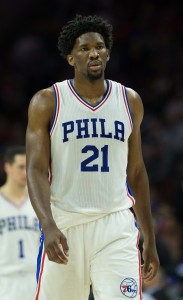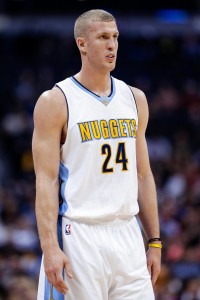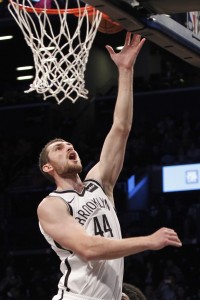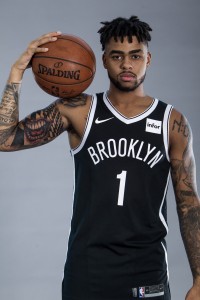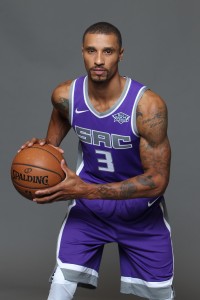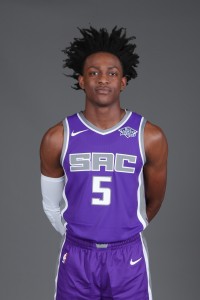Since reaching the playoffs for 10 straight seasons from 2004 to 2013, primarily under George Karl, the Nuggets have been going through a transitional period for the last several years. While Denver never fully bottomed out in order to land a top-five draft pick, the club has failed to post a .500 record since 2013, winning between 30 and 40 games in each of the last four seasons.
The most positive steps forward for the franchise during that stretch came during the 2016/17 campaign, when Nikola Jokic emerged as one of the NBA’s most talented big men, and young guards Gary Harris and Jamal Murray showed the potential to develop into indispensable core pieces as well. The team narrowly missed the playoffs with a 40-42 record, but there was a sense heading into the summer that the team wasn’t far from taking a big step forward.
Armed with plenty of cap flexibility and a horde of potential trade chips, general manager Tim Connelly entered the offseason aiming to add an impact player at point guard and/or power forward to complement Jokic and the team’s depth on the wing.
Key offseason losses:
Roy Hibbert only played a total of 11 minutes for the Nuggets after being acquired in a deadline deal, and Mike Miller was mostly on the roster for veteran leadership purposes. Both players were offseason departures, but neither will be missed for their on-court production.
One player whose on-court contributions will be missed is veteran forward Danilo Gallinari, who had been with the Nuggets since arriving in Denver way back in 2011 as part of the team’s haul for Carmelo Anthony. After spending more than six years with the franchise, Gallinari opted to head west this summer, with the Nuggets accommodating a sign-and-trade arrangement that sent the Italian sharpshooter to the Clippers.
Although he was overshadowed last year by Jokic’s breakout season, Gallinari was the Nuggets’ leading scorer in each of the last two years, and was also one of the team’s most dangerous threats from outside — in 2016/17, he made 2.0 three-pointers per game at a 38.9% clip. Parting ways with Gallinari was necessary for the Nuggets to make a big splash in free agency, and the club has enough forward depth that it should be able to get by without him, but he’ll be missed.
Key offseason additions:
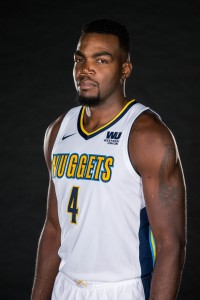 Before the free agent period began, the Nuggets were linked to a handful of high-profile point guards and big men, with the most notable rumor suggesting that the team nearly traded for Kevin Love in a three-way draft-night deal. That proposed trade would have seen the Nuggets give up Harris, so it turned out to be a blessing for the club that it fell through, as it led to the opportunity to land Paul Millsap in free agency.
Before the free agent period began, the Nuggets were linked to a handful of high-profile point guards and big men, with the most notable rumor suggesting that the team nearly traded for Kevin Love in a three-way draft-night deal. That proposed trade would have seen the Nuggets give up Harris, so it turned out to be a blessing for the club that it fell through, as it led to the opportunity to land Paul Millsap in free agency.
Millsap is a few years older than Love, and the former Hawk is perhaps not as dynamic an offensive player, but he looks to me like a better fit in Denver alongside Jokic. The Nuggets’ defense was the team’s Achilles heel last season, and Millsap is much more reliable than Love on that end of the floor.
Signing Millsap outright rather than trading for Love or another big man also allowed the Nuggets to hang onto Harris, a player they like a lot — Harris later inked a four-year, $74MM extension to remain in Denver.
With the frontcourt sorted out, the Nuggets turned their attention once more to the point guard spot, but targets like George Hill were out of the club’s price range after the huge investment in Millsap. Denver reportedly tested the Kyrie Irving waters as well, but was reluctant to part with Murray and wasn’t able to match or top the Celtics’ offer. As a result, the collection of point guards on the roster looks similar to last year’s group, with the Nuggets hoping that Murray or Emmanuel Mudiay can grab hold of the job — if they can’t, Jameer Nelson is around to provide steady – but unspectacular – production.
The Nuggets’ only other summer additions of note came by way of a draft-night trade with the Jazz, who sent Trey Lyles and the No. 24 pick to Denver in exchange for the No. 13 pick. It was a questionable move by the Nuggets, who used the 24th pick on Tyler Lydon. Lyles and Lydon don’t figure to have major roles in the club’s rotation this year, barring another trade.
For a team that would benefit from paring down its depth and focusing more on acquiring high-end talent, that sort of one-for-two trade didn’t make a ton of sense. If they weren’t going to include the 13th overall pick in a trade for a star, the Nuggets could have used it to select a promising rookie like Donovan Mitchell, or a high-upside, high-risk prospect like OG Anunoby or Harry Giles.
Outlook for 2017/18:
While there’s a lot to like on this Nuggets roster, it’s fair to question some of the moves made this year by the front office. The team didn’t get much in return for Jusuf Nurkic in February, made an odd draft-night trade with Utah, and probably overpaid to re-sign RFA Mason Plumlee, who got $41MM in guaranteed money despite holding little leverage late in the offseason.
For now, the good outweighs the bad in Denver, but this is a roster that will require another trade or two at some point. In addition to figuring out the point guard position, the Nuggets will also have to determine whether players like Kenneth Faried, Wilson Chandler, and Will Barton are trade chips or potential building blocks for the future.
In the meantime, led by Jokic and Millsap, the Nuggets look like they’re ready to make the leap into the Western Conference’s top eight, even if they’re not a legit contender quite yet.
Salary information from Basketball Insiders used in the creation of this post. Photos courtesy of USA Today Sports Images.
